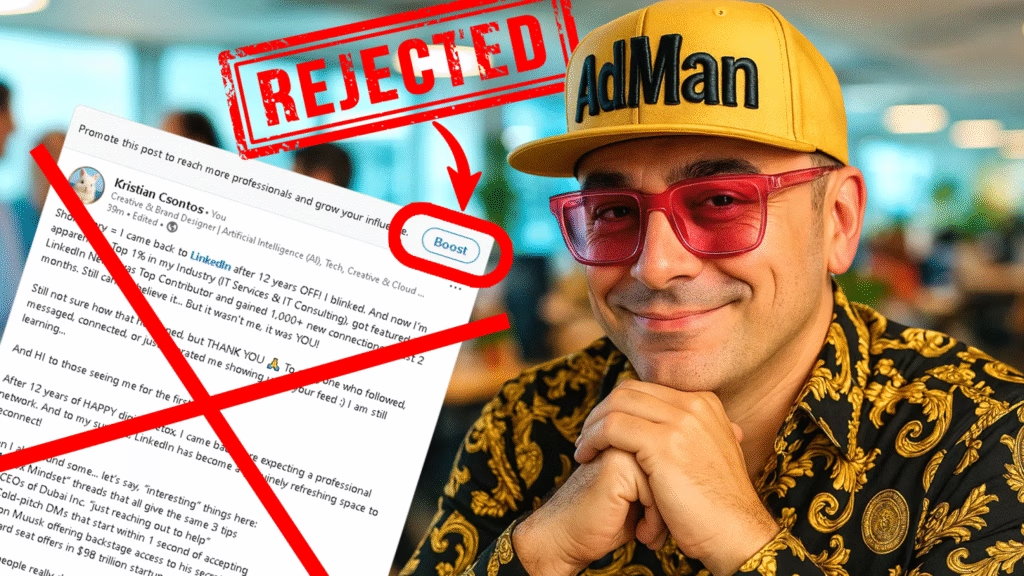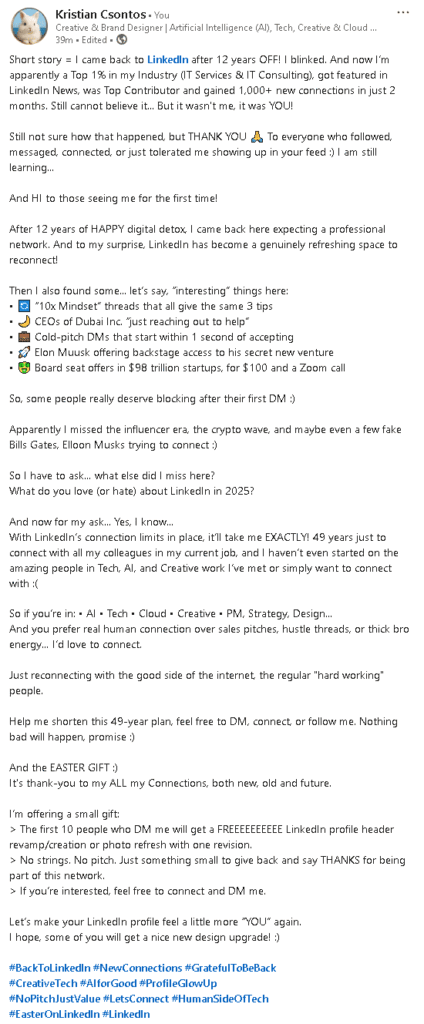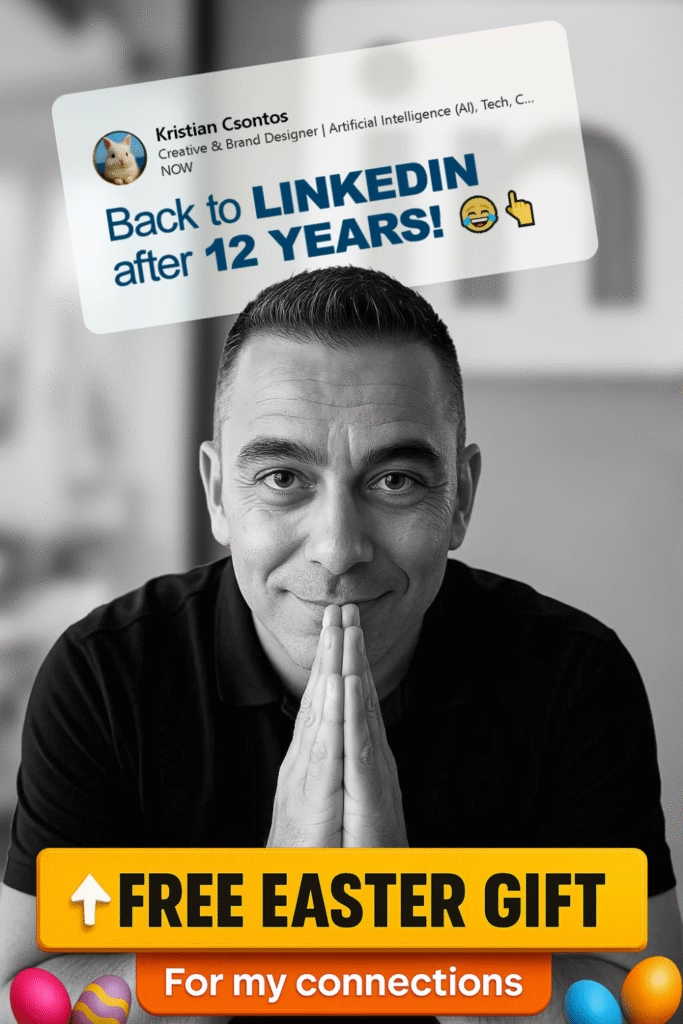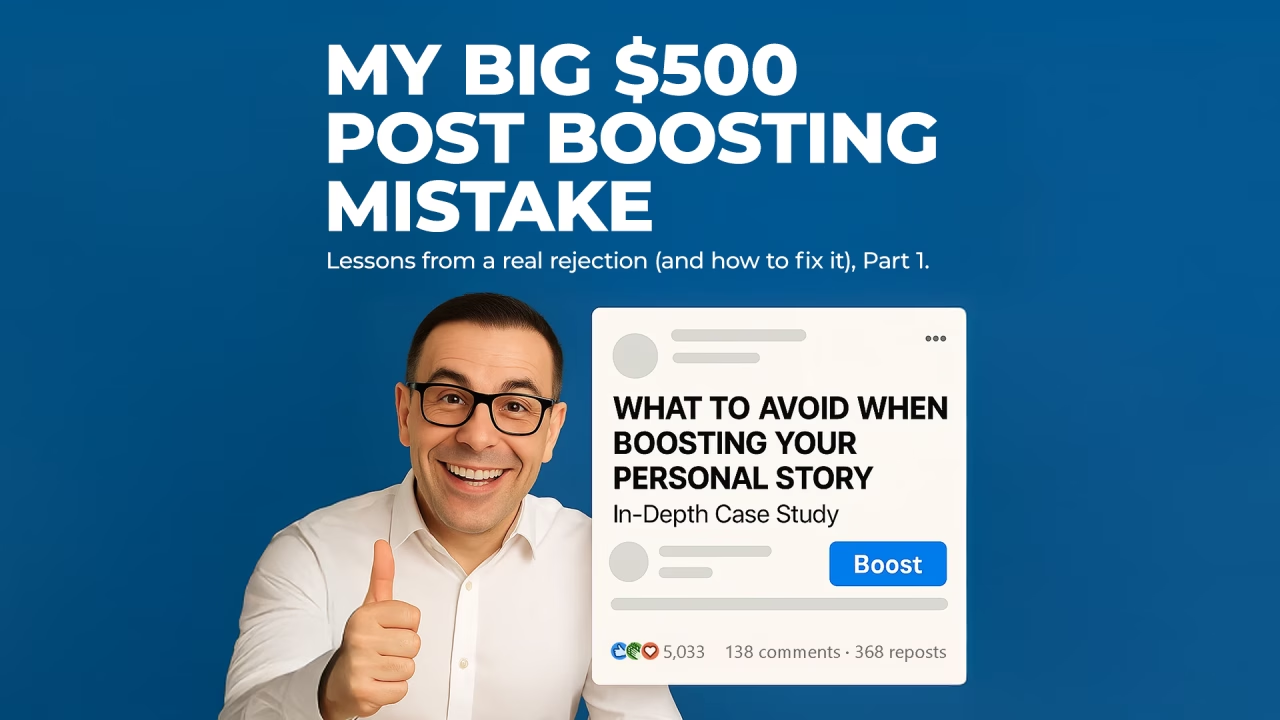Stepping back into LinkedIn after a long pause felt a bit like discovering a city after years of absence. My time at RedWorks, Inc., working on sleek campaigns for Fortune 500 companies, had been quite an experience. But, diving back into LinkedIn with plans to make my comeback impactful? That was a whole new ballgame.
So, I devised a thoughtful post filled with gratitude and personal reflections. I had some ad credits to use and thought, “Why not boost this heartfelt message for my connections?” I put time and creativity into it, but the result was a rejection. Here’s what happened and what I learned about boosting personal posts on LinkedIn.

Understanding the Boosting Game
First things first, boosting a post on LinkedIn transforms it. It morphs from a personal story to an advertisement. This subtle shift means adhering to professional standards is crucial. Here’s what I discovered about getting it right.
1. Write Like a Pro, Not Like a Pitch Deck
While personal tones connect with audiences, boosting requires a polished approach. Suddenly, your narrative becomes subject to the polished world of advertising. Keep your story engaging yet professional.
- Do: Use personal anecdotes in a clear and approachable manner, like, “I came back after 12 years offline to rebuild my network.”
- Don’t: Avoid shouty, hyped language like, “I’M BACK AFTER 12 YEARS!!!”
2. Be Emoji-Smart
Emojis add flavor and emotion, but moderation is key. Too many can make your post resemble spam, triggering rejection.
- Do: Use 1-2 emojis to enhance your story if necessary.
- Don’t: Avoid overuse that detracts from the professional tone, such as “Thanks!!! 🚀👏📈”
3. Clean Up the Punctuation
Proper grammar and punctuation clarity are vital. Weird punctuation styles can be a fast track to rejection.
- Don’t: Use excessive punctuation like “!!!” or “…”
- Do: Opt for concise sentences with proper punctuation.
Example: Instead of “So… I decided to return… and OMG… it was wild!!” try “After 12 years away, I returned. What I found was totally different in the best way.”
4. No Sensitive “You” Targeting
Your story is yours to tell, but avoid assumptions about the reader’s circumstances.
- Don’t: Say, “If you’re stuck in a dead-end job, you need to read this.”
- Do: Frame it personally, like, “I once felt stuck in a role that didn’t fit me. Here’s how I climbed out.”
5. Avoid Clickbait or Exaggerated Promises
Ensure your claims are realistic and grounded. Over-the-top promises can lead to quick rejection under LinkedIn’s ad policies.
- Don’t: Say, “Learn my secret to instant LinkedIn fame!”
- Do: “Here’s what worked for me in rebuilding my presence on LinkedIn.”
6. Stick to the Right Formats
Ensure your post type fits LinkedIn’s criteria for boosting. Not all formats are eligible.
- Do: Use regular text posts, single images, link posts, or native videos.
- Don’t: Attempt to boost polls, multi-image posts, documents, celebrations, or group shares.
7. Watch Your CTAs (Calls to Action)
Your call to action should feel inviting, not commanding. Make it a gentle nudge rather than a hard sell.
- Don’t: Make forceful calls like “Click here to buy” or “Act now!”
- Do: Invite gently and engage, “If this resonates, feel free to connect” or “Drop your thoughts in the comments.”
8. Don’t Over-Tag or Over-Link
Be mindful of tagging and linking. Overdoing either can edge towards spam territory.
- Do: Tag 1-2 relevant people or companies.
- Don’t: Tag 10+ entities or pepper your post with multiple links.
If you must share a link, consider placing it in the first comment rather than the main post.
Conclusion: Learning from Failure
This rejection was a learning curve. The rules I stumbled across might help someone else sidestep similar frustrations. Boosting personal stories on LinkedIn requires striking the right balance of storytelling and professionalism.
If you’ve faced a similar rejection, or have insights into crafting effective boosted posts, I’d love to hear your experiences. Let’s learn together and improve how we express our stories and connect on this platform. Stay tuned for Part 2 where I’ll dive into structuring posts with high engagement potential. We’ll explore ways to make your story robust and LinkedIn-ready.
As we navigate these nuances together, let’s make our LinkedIn presence not just noticeable but memorable too.
Rejected post:

Post image:

